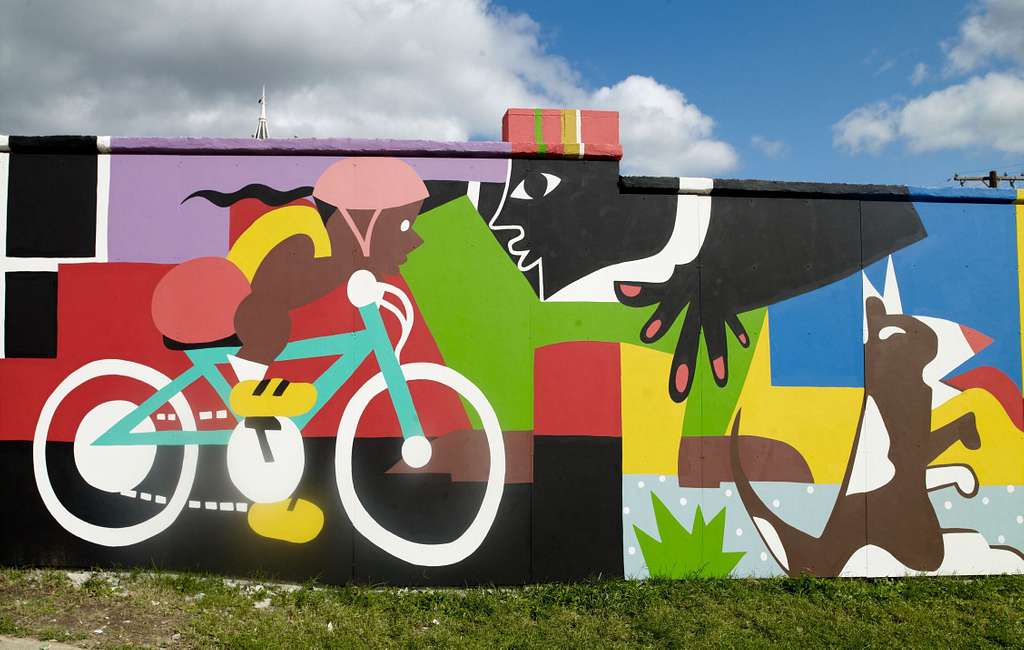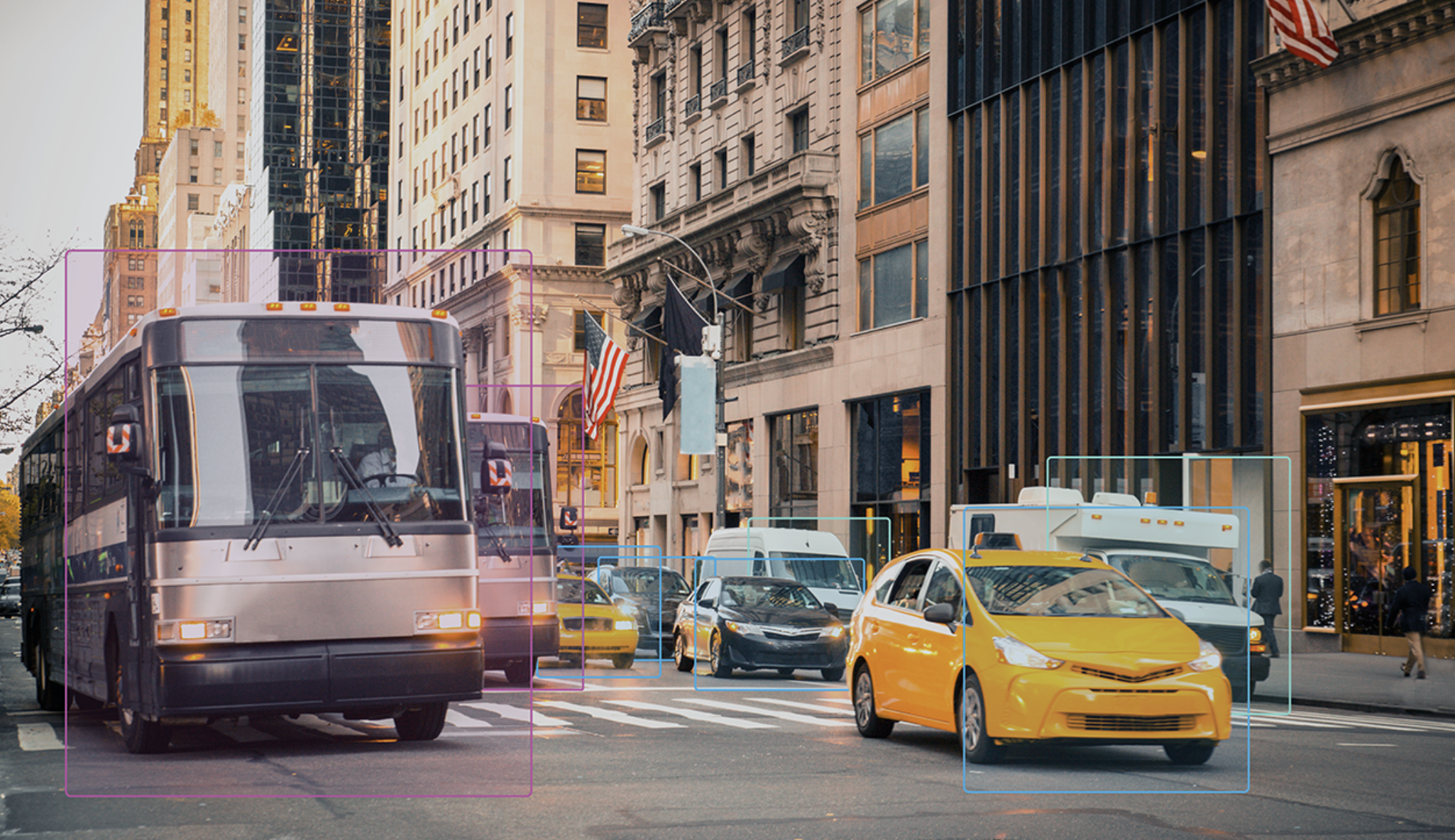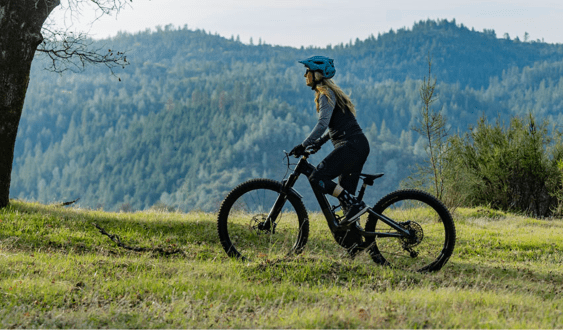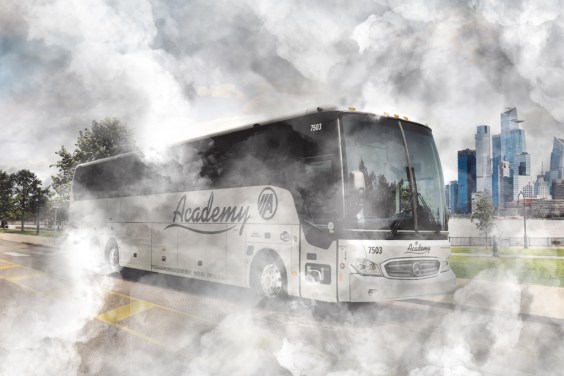America has a new most-bikeable city, according to a prominent ranking — but the real story may be the dozens of communities that are sparking a revolution in rapid cycling investments, even if they haven't claimed a spot in the top 10 just yet.

Brooklyn nabbed the title of the highest-rated large city in this year's PeopleForBikes City Ratings with an impressive score of 73 points, following the organization's decision to treat New York City's five boroughs as separate entrants for the first time in the eight years they've published the list. Last year's top-ranked Minneapolis fell to number two with 72 points, followed by Seattle (66); the newly ranked borough of Queens (63) and San Francisco (63) tied for fourth, and St. Paul (62) rounded out the top five.
Davis, California (81) again claimed the title of most-bikable mid-sized city, while the car-free Mackinac Island, Mich. predictably won among small cities, with a perfect score of 100 points.
Those superstar cities won their impressive scores on the strength of slow local speed limit policies, connected and protected bike lane networks, next-level data transparency and three other factors that collectively make up the organization's methodology. But they didn't outshine the lower-ranked cities on the list, at least when it came to one key metric: how quickly they're getting better.
And considering that 234 U.S. cities scored 50 or higher in the ratings this year — up from just 33 cities in 2019 — the race for "most-improved" was arguably steeper than the race for the top spot.

The small city of Hailey, Idaho, for instance, experienced a staggering single-year jump of 53 points, rising to a total score of 77 and technically outpacing the top-ranked large city on the list, thanks in large part to an effort to drop speed limits as low as 15 to 20 miles per hour on many of its streets. The report authors say it's often easier for small cities to notch those kinds of big wins, but even a few larger communities like Baltimore reported relatively impressive increases, increasing their scores almost 25 percent in a single year.
The PeopleForBikes team says that if these cities can do it, anyone can.
"[These fast-improving cities] didn't just go build 80 miles of bike lanes in the course of a single year — that's really tricky," said Grace Stonecipher, infrastructure analytics and research manager for the organization. "One of the lowest-hanging fruits is reducing speed limits; that's a major thing that changes the street from high stress to low stress, [especially] when that speed limit gets to 25 miles per hour or below. ... And then often, there's great bicycle infrastructure in different parts of town, but it's not connected to each other. So sometimes, getting that key bike lane downtown that gives a lot of people access to a lot of destinations."
Stonecipher acknowledged that even the best-intentioned communities might struggle to make those changes — which is part of what's made PeopleForBikes' rankings controversial, especially among advocates whose states have strict statutory speed limits, less state funding for local projects, or who face other barriers to making bikability improvements. And needless to say, large-scale, multi-year projects like the kind the group is documenting in its "Great Bike Infrastructure Project" are even more challenging to get across the finish line.
Still, she said many communities can still do more for people on two wheels, if only just increasing data transparency to make it clear exactly where they're investing in cycling — and where there's room to grow.
"When you start to put bike infrastructure on a map, it becomes pretty obvious where the gaps in your network are, whether those are high stress intersections or high stress streets that are cutting a town in half," Stonecipher added. "Making sure that all of that data is on the map together gives you that big picture, so that you know where to zoom in and where to put limited resources if you can't do a whole network at once."
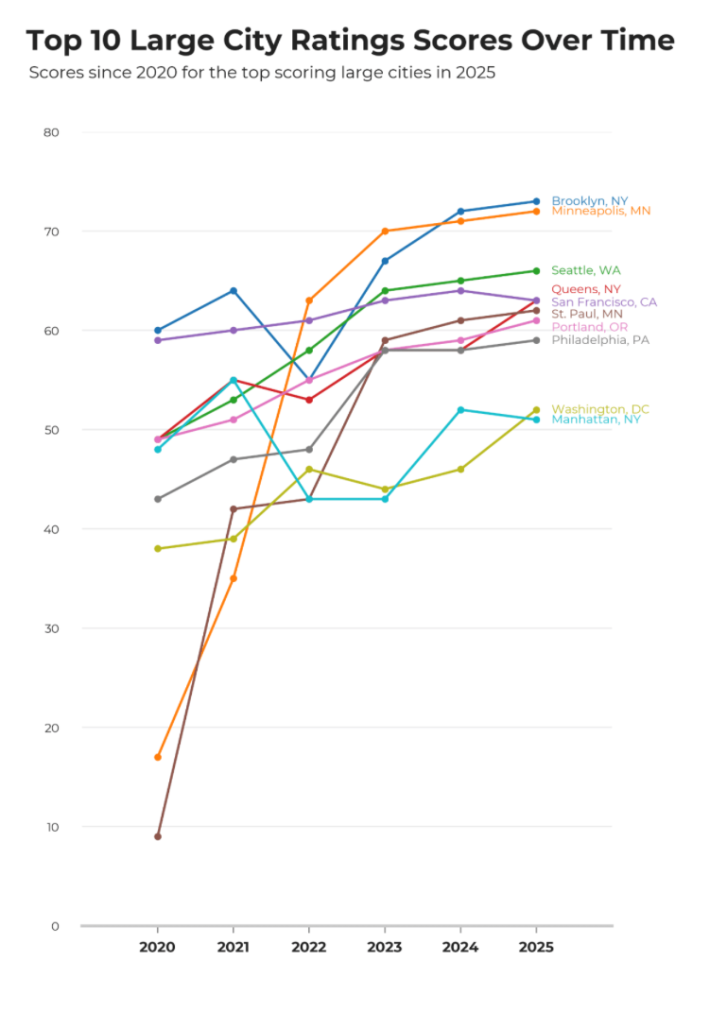
Slowing down and taking stock of their bike network has paid off for some of the top cities on PeopleForBikes list — and while those dividends didn't always arrive overnight, they did show up fairly quickly.
Second-ranked Minneapolis, for instance, had a dismal score of just 16 points as recently as 2020, before having its own quantum leap moment in 2021 when the Mini Apple skyrocketed into the mid 30s — and another in 2022 that propelled them to the mid 60s. In the last three years, the city has been hovering steadily in the low 70s, but the PeopleFor Bikes team doesn't believe it's plateaued yet.
"They have been building towards this for a while," said Martina Haggerty, the organization's vice president of infrastructure. "They came out with a really great bike plan; they came out with an aggressive complete streets policy, ... they updated their bike plan later on to include more protected infrastructure, and they have a climate action plan that is part of this, too. And so when you put all of those things together, they've really been laying the groundwork, doing the community engagement, and the planning for this network that we're seeing built today."
However their cities rank, Haggerty hopes advocates will see their rating as a tool to challenge city leaders to do better — because with the right messaging and strategies, any community can chart a path to a better biking future.
"[You need to think] about how you engage community members and build relationships with elected officials, and even the media in your community," added Haggerty. "[It's about] how you talk about the work, how you message your work, and [how you] build broader coalitions that include folks from different areas of your community, and not necessarily just focusing on people who bike. Those are the things that are really going to help make a difference over time."
